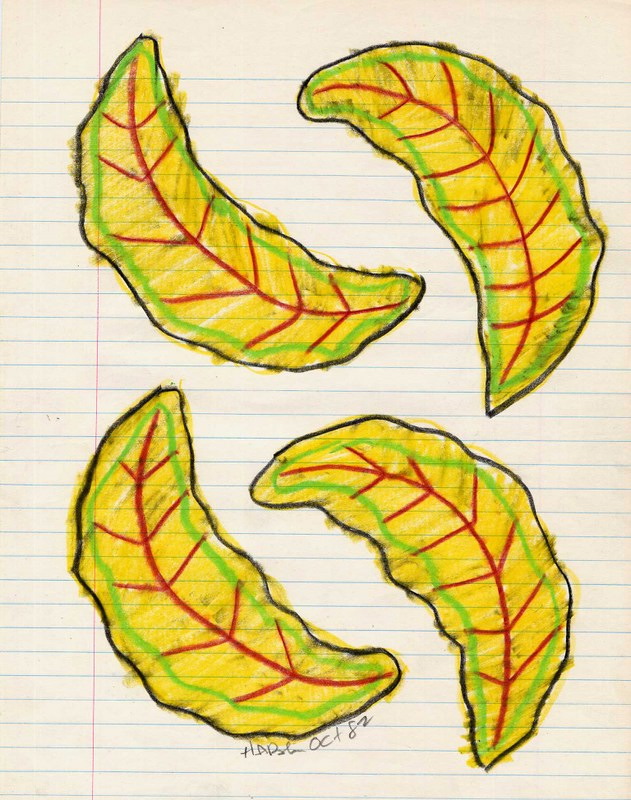|
|
| Jan/Feb 2007 • Nonfiction |
|
|
| Jan/Feb 2007 • Nonfiction |

She was all the rage when I arrived in Chicago. She was a steady date for the evening news anchors and an excuse for a night on the town for the Catholic and the curious. With all the attention, she gained weight, beckoning the whole city of Chicago to come and see her down by the oil and the piss smell where I-90 projects over Fullerton Parkway.
I don't know who found her, or exactly how she came to be. All that had gone down before my arrival, well documented and beamed to suburban living rooms by agnostic cameras. By the time I rolled in, fresh off the empty Nebraska plain coming from Denver, the Holy Virgin Mary of the Underpass had already established her congregation there under the Interstate.
Her physical presence on the concrete wall was easily explained. Runoff from the highway, water mixed with gas and oil and the aroma of money, trickled down the plain gray of the underpass walls, following the cracks like an old river tracing a familiar path through the mountains. Both were in cahoots with gravity, but only the Interstate runoff left behind a rust-colored stain for Chicagoans to worship and call the Mother of God. It was a miracle. It was a miracle because people standing in the underpass holding candles, projected on TV, called it a miracle.
A few blocks away, the Chicago River was not worshiped. It was the devil next to Mary of the Underpass. It was the kind of old spirit no one will talk about, the kind that, when you see it on the street, you walk right by, eyes to the ground, meek, submissive, shameful.
The River wasn't part of the people, not like the Underpass. Thousands, millions of people cruised through that underpass, noting static hiccups in their cell phone reception and in the chatter of the radio, sport, talk, or music, all hawking the message of those rich enough to speak. It was a passing interaction, to be sure, between these people and their concrete, but all the intersections in the city were the same, passing in motion, forgotten and replaced by an unarticulated desire for something.
No one felt the River, too ugly and polluted to be desired, its consequences too slow moving to be discussed in the news. During my first few weeks in the city I tried to start a conversation with it, to get it to notice me, but it was a waste of time. Stopping my bike in the middle of the Fullerton bridge, I was looking into the Chicago River hoping to catch a glimpse of those other rivers I'd left behind out West. Foolish. The Chicago hadn't been a river in a long time, not in the way of the rivers I grew up with, the Clark Fork and the Jefferson and the Big Hole and the Blackfoot. The Chicago was a corpse, long dead and buried.
Mary of the Underpass was no more alive, but, above ground where the cars passed there on Fullerton, she was a novelty. She was strange to me, exotic and incomprehensible as a belly dancer, quivering flesh and a look-but-don't-touch-allure.
But I hardly noticed. Coming from the West, everything in Chicago was strange to me. It was all familiar, the rhythms of the day-to-day and the streets charting them. But the angles were different from the West, tilted. People seemed almost ambivalent about their surroundings. Not me. I was in love with train tracks and perpendicular three-way intersections, with the lake and the buildings poking the empty sky, trying to put it to some great urban use.
That love gave me an impulse to put my two feet to use. Unemployed, I enjoyed a rare luxury in Chicago—time. So I wandered, sometimes with a mission in mind, sometimes just to see where I ended up. When Joe suggested we take a walk to bear witness to Mary of the Underpass at one in the morning after a night spent drinking and watching the Cubs lose at the Damen Avenue Grill, it was the natural thing to do. Even at that hour her Underpass was crowded with believers pushing to get closer to their degrading idol. The cops were there too, watching for something to happen. I couldn't imagine what. With all the people crammed in that narrow space, traffic whizzing by, it was hard to get close enough to see, but we finally maneuvered our way in. I saw the stain, but I didn't see Mary. "Bullshit, there's nothing there," I declared to no one, too loud in my drunkenness. Some of the Catholics shot me the evil eye, and Joe told me to shut the hell up.
But it was the truth. I didn't see anything. I wondered if it was my fault or the stain's. Maybe I wasn't worthy of Mary, Holy Virgin of the Underpass. Maybe only the faithful could see her. Joe, raised a Catholic, didn't say if he saw her or not. We walked home in a light rain, laughing about nothing.
Sitting in my apartment in Bucktown, at the office, on a train or on a barstool, sometimes I wonder about Mary of the Underpass. I wonder if her stain still has any power to draw people out to her dingy nook there on Fullerton. I think about going back, it's only a mile from my front door, and wonder if this time I would see anything other than corroding concrete. I haven't gone back yet.